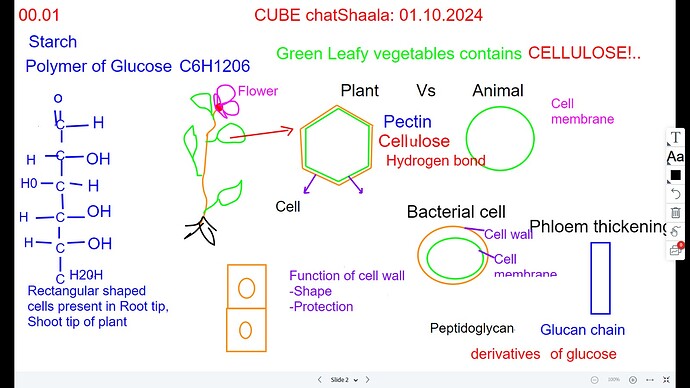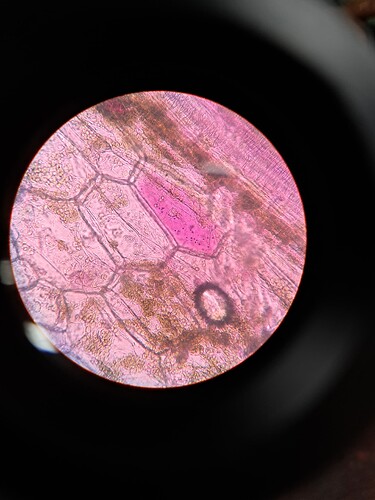The main research question addressed is:
1)How do humans make use of cellulose?
Unlike starch and glycogen, cellulose consists of glucose molecules linked by beta-1,4 linkages. Humans lack the enzyme needed to break these beta-1,4 linkages. However, cellulose can be broken down by enzymes produced by bacteria present in the gut.
Both starch and cellulose are composed of glucose, but they differ in their linkages. In starch, two glucose molecules are linked by alpha-1,4 linkages, with branch points formed by alpha-1,6 linkages. In contrast, cellulose is linked by beta-1,4 linkages.
References:
Amylose is a polysaccharide made of α-d-glucose units, bonded to each other through α(1→4) glycosidic bonds with a comparatively low degree of polymerization (DP) (3000) and a branching frequency with a low α-1, 6 linkage frequency (< 1%), while amylopectin tends to have high DP (> 5000) and higher α-1, 6 linkage frequency (3–4%) .
https://www.sciencedirect.com/topics/biochemistry-genetics-and-molecular-biology/amylose
ẞ-1,4 glycosidic bond is formed by covalent bonding of oxygen to the C1 of one glucose ring and the C4 of the connecting ring.
https://www.researchgate.net/figure/b-1-4-glycosidic-bond-of-a-cellulose-unit_fig5_311524945
Cellulolytic bacteria are key participants in this breakdown process of cellulose, which is otherwise indigestible by the host.Over a century of research on the large intestinal cellulolytic microorganisms has brought to light two major cellulolytic bacterial genera, Fibrobacter and Ruminococcus, in herbivores as well as in omnivores, such as humans.
The digestive process of horses is similar to that of humans, and many of the intestinal bacteria found in horses that degrade plants are also found in humans. Therefore, it is thought that humans also obtain a certain amount of energy from cell wall-derived dietary fiber. However, the intake of dietary fiber by modern humans is low; thus, the amount of calories derived from indigestible plant fiber is considered to be very low.
2)Cell shapes
A major difference between plants and animals is the presence of a cell wall in plants, which animals lack. The plant cell wall is made up of cellulose, hemicellulose, and pectin. In contrast, the bacterial cell wall is composed of peptidoglycan, which includes N-acetylglucosamine and N-acetylmuramic acid.
The composition of cell walls varies across taxonomic groups, species, cell type, and the cell cycle. In land plants, the primary cell wall comprises polysaccharides like cellulose, hemicelluloses, and pectin. Often, other polymers such as lignin, suberin or cutin are anchored to or embedded in plant cell walls. Algae exhibit cell walls composed of glycoproteins and polysaccharides, such as carrageenan and agar, distinct from those in land plants. Bacterial cell walls contain peptidoglycan, while archaeal cell walls vary in composition, potentially consisting of glycoprotein S-layers, pseudopeptidoglycan, or polysaccharides. Fungi possess cell walls constructed from the polymer chitin, specifically N-acetylglucosamine. diatoms have a unique cell wall composed of biogenic silica.
Both plant and animal cells all are not in similar shapes .RBC shape is different from muscle cell shape and so on .Like plant cell is not always hexagonal it can vary.
The shape of the human red blood cell is known to be a biconcave disk.
Skeletal muscle fibers are cylindrical, multinucleated, striated, and under voluntary control. Smooth muscle cells are spindle shaped, have a single, centrally located nucleus, and lack striations.
Muscle Tissue | SEER Training.
3)What is the propose of cell wall in plants
The final shape of a growing plant cell, and hence the final form of the plant, is determined by controlled cell expansion. Expansion occurs in response to turgor pressure in a direction that depends in part on the arrangement of the cellulose microfibrils in the wall.
- Influence of cell wall in plant cell shape
The final shape of a growing plant cell, and hence the final form of the plant, is determined by controlled cell expansion. Expansion occurs in response to turgor pressure in a direction that depends in part on the arrangement of the cellulose microfibrils in the wall.

